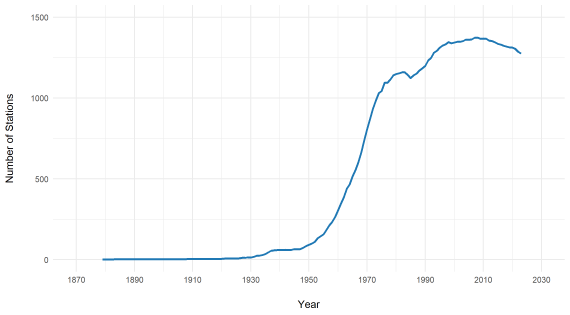In contrast to the raingauge network, which was well developed by the middle of the nineteenth century, gauging station construction in the UK was very spasmodic until the latter half of the 20th century. Routine flow measurement of the Thames and Lee began in the 1880s and, in Scotland, Captain W. N. McClean initiated a small pioneering gauging station network prior to the First World War.
However, the creation of a national gauging capability awaited the formation of the Water Resources Board, in 1963, with powers to approve and grant-aid hydrometric schemes. This national initiative heralded a rapid growth in the monitoring network such that by the early 1970s outflows from almost 70% of the land area of Great Britain was directly measured at least once. Network growth has moderated over the last 30 years (see Figure 1 below) but new gauging stations continue to be commissioned to meet both operational and strategic needs.

